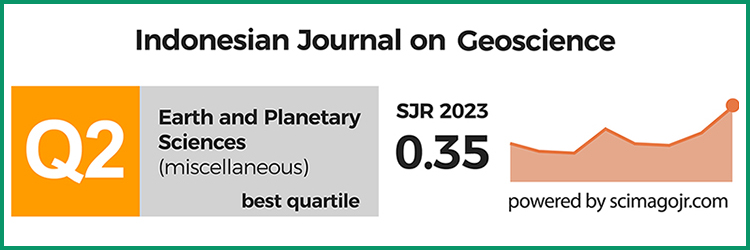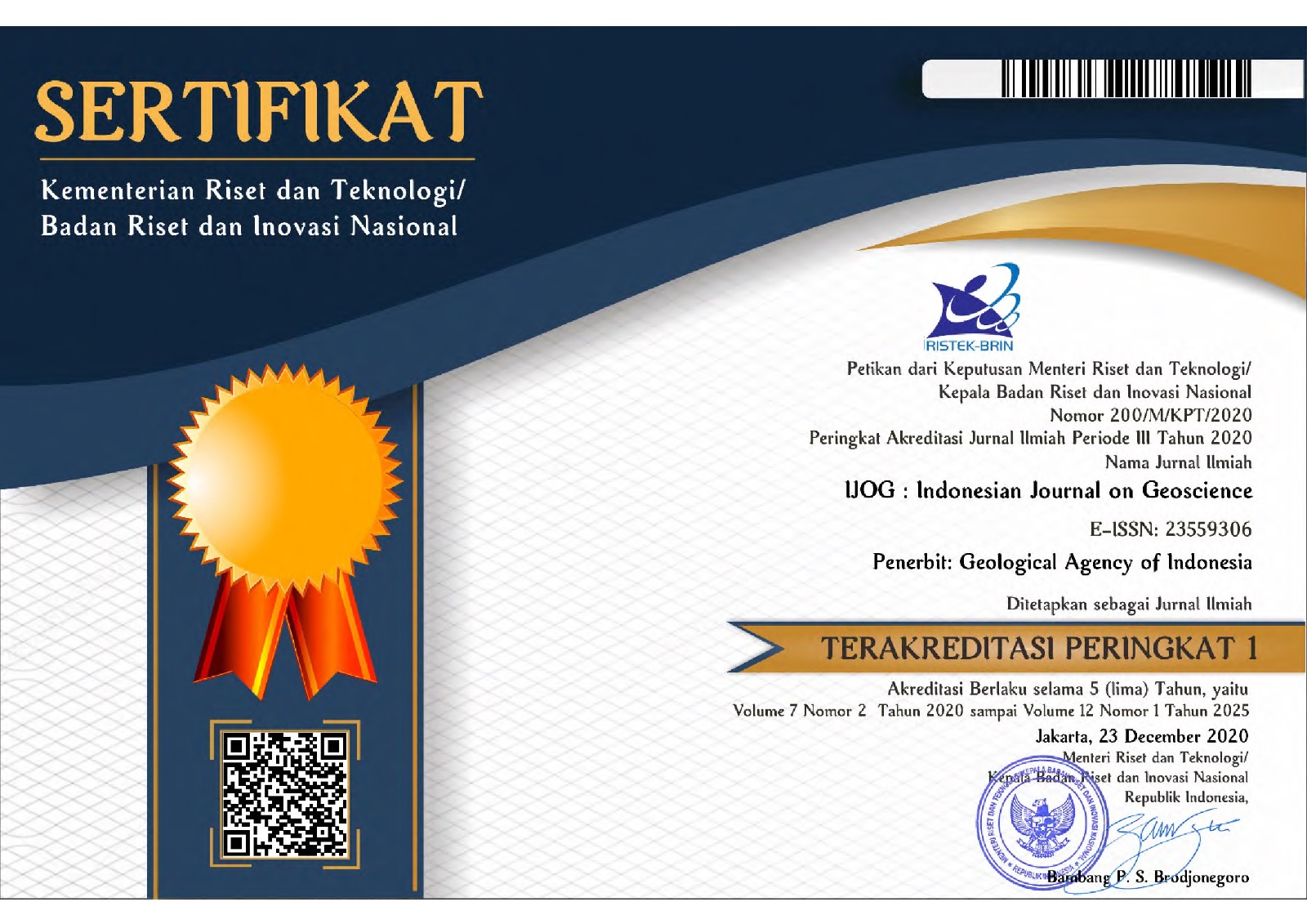Isotope Analysis of Coastal Groundwater in Padang City: Implications for Recharge and Salinization
DOI:
https://doi.org/10.17014/ijog.12.2.163-173Abstract
The development of Padang City in the coastal area is potentially faced with seawater intrusion. This study was conducted to determine the characteristics of shallow groundwater on the coast of the city using stable oxygen -18 (18O) and hydrogen -2 (2H) or deuterium isotopes, which are abundant in the nature. The isotopic analysis revealed variations in groundwater isotopic composition, indicating the possibility of diverse recharge sources. Although this study was primarily focused on salinity identification, the isotopic data provided preliminary insights into the influence of local meteoric recharge. Water samples were taken at several locations 5 m below the ground surface, and one sample of seawater was collected at an elevation of 0 m, which comes directly from sea water. On the average, they were located 270 m from the sea. The spectrometry of these water samples produced isotope ratios expressed per thousand or mil, which were then plotted on a graph illustrating the relative abundances of oxygen (18O) and deuterium (2H). Analyses of the stable 18O and 2H isotopes found two water samples close to the local meteoric water line (LMWL) and one sample interacting or mixing with seawater. The mixing effect is likely the product of evaporation and interaction between water and oxide minerals that compose the aquifer lithology, i.e. loose (sand) deposits. Based on the electrical conductivity, these samples had brackish water.



















